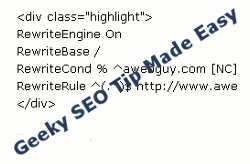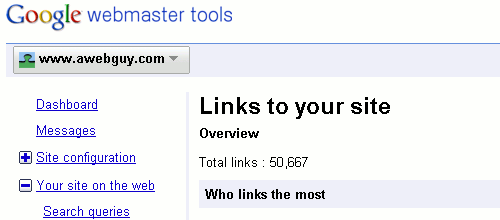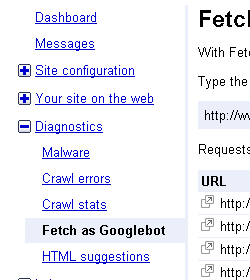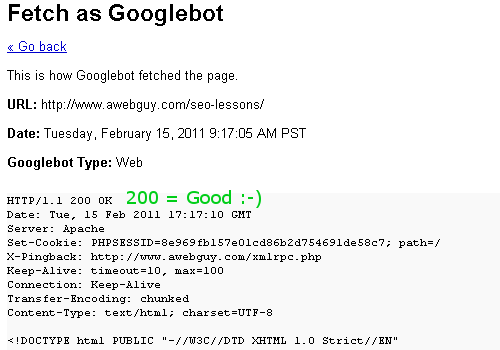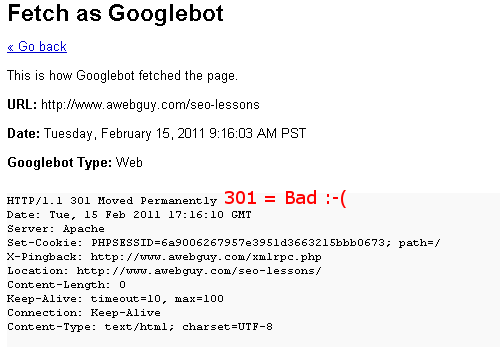
If I had an ounce of sand for every request I have received to help somebody become an SEO and Social Media Expert I could retire on my own private beach in a magnificent sandcastle.
As I consider all of the hype associated with SEO and social media marketing, I guess I can understand why so many people are attracted to the industry. The problem I see is that the hype has become far too believable, while reality and common sense have been left to rot.
I love to help people with their learning, and I take a lot of care to do it well. I will never intentionally lead you wrong, but in order to keep being helpful, it is important to understand people’s motivations. I will share some of my observations with you, and I would like your input as well.
My editor, Peggy, has already called this a “rant”, but it is a rant which I believe can be useful, or at least entertaining. I told Peggy this is something I think some people need to hear, and take seriously to heart as they consider their motivations for learning about SEO and social media.
I don’t want to be cruel, because I know that many fine people read my work to learn, and to pick up new ideas. The only cruelty here will come from within, if you find that you are doing things for the wrong motivations. Sometimes, my voice of reason must come out, and I have to be cruel to be kind. I want to understand my readers’ motivations better. Perhaps if I help you to reflect upon your own motivations, it will help us both.
Below are some observations that I find common among people seeking to learn SEO and social media marketing. I am absolutely not categorizing everybody, and I would not begin to tell you that you fit into one of these groups. These are just some observations I have found from well over a decade in this line of work. If you feel a bit awkward because you can relate to any of these, you should perhaps rethink your goals. Maybe you really are built for this, or maybe you should keep your day job. You decide!
Did You Think It May Be an Easy and Glamourous Job?
This industry is not lacking for participants. If you want a line of work where your demand will be high, try nursing. If you want a job that requires little training, try house cleaning. If you think that SEO and social media marketing is an industry that has a low barrier of entry, think again! The level of training, effort, and marketing talent required to be successful in this industry is not unlike becoming a rock star or a movie actor … only without the red carpet and paparazzi. Oh, and the groupies usually don’t throw lingerie at you or lift their shirt to get your attention.

SEO and social media is not as easy or as glamourous as those people promoting their “get rich quick” online marketing schemes will tell you. Oh, I suppose you could grab some quick bucks if you want to lie to people.
If you are the type who will do anything for money, I have some wise advice for you: Customers are not stupid for long. They may believe you if you say “just wait … the profit is coming”, but then it will not be long before they wise up and realize that the industry is full of bullshitters like you. Then they look for people with a track record and a reputation. That may not starve you today, but it will starve you. It is an easy way to keep enjoying your canned beans and mac & cheese while living in a cramped apartment with cockroaches and worrying about how to ask Mom to move into her basement. Stop now, save your effort, and get a job. This is a career where you will not last. Even if you straighten up and do the right things, your reputation will follow you and haunt you until you are back to mopping the floor of a truck stop where you may actually have superior skill. Got it, lowlife?
Social Media and SEO are “The Future”

Maybe you heard what I heard back in grade school. In the 1980’s I heard “Computers are the future!” and I took heed and learned a lot about them. Maybe you heard it later and they told you “The Internet is the future!” I heard that, and I founded an industry leading wholesale Internet services company. If you were really late in the game, you heard that “SEO and social media marketing is the future!” Maybe it is, or maybe it is not, but unless you are innovating, you will be stagnating.
Unless you are seriously committed to this industry enough to give up a whole lot of sleep and work extremely hard, you are better off looking for the next big craze. Most people will not tell you how hard it is to become good at this business. They will also usually neglect to tell you how many extremely intelligent people there are who make up the top echelon of the SEO and social media marketing industry. Just when you think you really have a mind for this, you may find that you are just a little more average than you expected. Average people don’t last very long, because the average person in this industry earns about three dollars per day and they move on to something else.
There isn’t much room in this industry for earning a living with average efforts, average results, average commitment, or average intellect. It takes a lot more than average to even begin to earn a full-time living in SEO and social media marketing. I guess, that is unless you can con your way into an entry-level position where you look over your shoulder every minute for fear of the boss coming to fire you because he found somebody in India who will do your job for a tenth of the money.
Marketing Your Own Company with SEO and Social Media
I know that a lot of people want to learn SEO and social media marketing to improve their own company. I have also seen how badly most of them totally destroy an otherwise decent potential to reach their market and do more business.

So, let’s say that this is the case with you, and business is so slow that you have time to take on a whole new job description on top of your regular job. Maybe you will delegate it to the receptionist, since the phones aren’t ringing anyway.
Even if you don’t make a mockery of your company by spamming to a disinterested audience in social media, it will be unlikely that you will do a better job than somebody who is already skilled in propensity modeling and market research.
Even if you don’t get your website banned by search engines for using SEO tactics you picked up at WarriorForum, you will never … and I mean never produce the same results as a studied SEO professional. I don’t mean the kid posting on WarriorForum who builds WYSIWYG websites with Dreamweaver or CoffeeCup. I mean the kind who will help you put your wallet back in your pocket before they would ever take your $699 for the instant-failure marketing plan you are asking for.
It is important to remember that for each customer you miss by doing things the wrong way, the cost goes up. You will also miss their repeat and referral business. If your business is already weak enough that you are trying to save money by doing your own marketing, it will likely become exceedingly worse the longer you do.
Have you ever heard that it is best to delegate tasks to people who know the job better than you? You will need a dentist someday. Do you want to take some dentistry courses so you can avoid hiring a dentist, too? What about auto mechanics?
Truly successful results in SEO and social media marketing do not come from people who are part-timers trying to be good at everything. Successful results come from people who do it all day and deep into night, and then lie awake in bed thinking about how they can do something bigger, better, and smarter tomorrow. You cannot get that from a quick course on how to become brilliant online. That comes from experience … hard-earned experience.
Enhance Your Existing Job with SEO and Social Media Marketing
Many people will try to learn more about SEO and social media marketing in order to enhance their existing job. This may have some benefit for people who are deeply entrenched in marketing, web development, web hosting, or other industry verticals. However, if you are not in one of these industry verticals, there really is not any value gained.
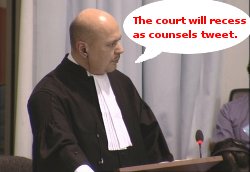
If you think that you will augment an existing job description by adding SEO and social media marketing to your task list, rub a lamp. That usually turns out about as good as the pool cleaner deciding to tinker on his client’s Porsche.
Do one job or the other, and make a decision. Being a little bit good at a lot of things is fine, but trying to be an expert with multiple things is about the worst career decision you will make. It may be helpful to know more, but do not expect it to be an enhancement, but rather a diversion. It will divert you from becoming even better at the job you already have.
Learning SEO and Social Media to Avoid Being Robbed
I think this is somewhat realistic, for a few people. I could see why somebody may want to know more about the industry to avoid being ripped off. This is even more important for a recruiter or hiring manager, but how much do you really need to know? There are some considerations to this which should eventually become obvious.

First: You can shop too much. It is easy to become confused, and if you are comparing the wrong things, you will get the wrong results.
Second: There are a lot of great liars in SEO and social media marketing. Look for quantifiable evidence proportionate with your objectives.
Third: Seeking good marketing should never conclude with the best liar, nor begin with the newest fool.
I think a lot of people in my industry can relate to this: My clients do not need to know everything about SEO and social media marketing. They just need to know that I do, and that I am not a conman. Learning a whole new job skill just to be a buyer is like learning automotive engineering just to buy a car. It does not scale well.
A little bit of reading things like “Good SEO vs. Bad SEO: How to Tell the Difference” and “7 SEO Lies: How to Know When the SEO is Lying” should be enough to make purposeful decisions. Then, if they pass those measures, read more about them, and find out what others say about them.
Lastly, if you are trying to learn SEO and social media marketing for shopping purposes, you will do well to read ““How Much Does SEO Cost?” is The Wrong Question”
Appear Cooler in Social Settings

Maybe you are looking for some cool factor in your social life. Heck, if you can learn SEO and social media marketing, maybe you will be better at arranging a tweetup or getting Facebook friends to love you. Maybe you could even use Twitter to get a bunch of people to go out for drinks with you.
Good luck, but wouldn’t it be more fun to just go out and get drunk without the curse of thinking about that new product launch. With all of those cell phone social media addicts around, you will never get drunk enough to have real fun. You don’t have to be an expert to make social media your party tool, just talk to any college student.
Aside from suckering people into paying your bar tab by sharing your expert advice, the return will probably be pretty low. I know, you may think it will help get them naked, and that is true, but so tacky!
In Summary of SEO and Social Media Marketing
Even with the very best alignment of the stars, and if you wake up to sex, coffee, and bacon every day, the job is still not easy. Finding people who are willing to do business instead of just talking about doing business is about as tough as pulling chicken teeth. There are so many bullshit sandwiches being served out every day that I am shocked McDonalds hasn’t put it on their menu.
Do you still want in? Tell me what you want to know, and I will give you my honest truth. Subscribe to my blog and I will give you some great tips and fresh ideas. If you just want to become an SEO and social media expert because it will make you rich and famous, back off … this industry will kill you and eat you before you will see success.
Photo Credits:
Paparazzi photo by internets_dairy via Flickr
Custom Trike by ale? via Flickr
Closing Arguments by Extraordinary Chambers in the Courts of Cambodia via Flickr
Podcast: Play in new window | Download
